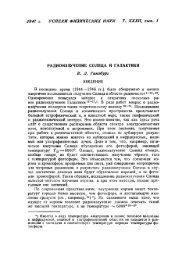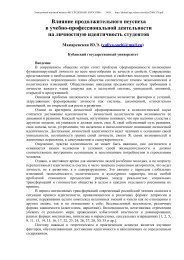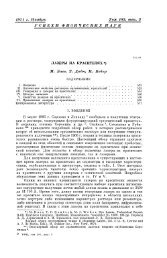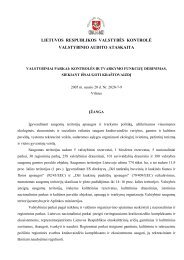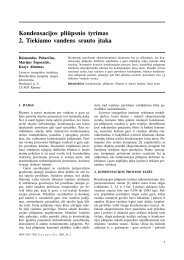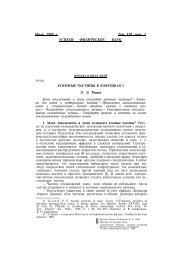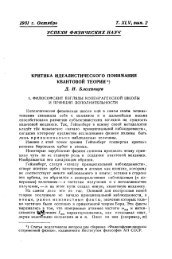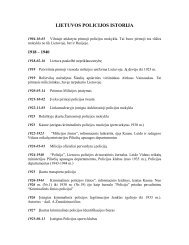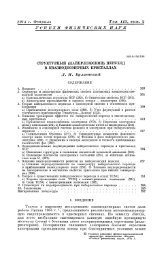University of Groningen Groningen Growth and Development Centre ...
University of Groningen Groningen Growth and Development Centre ...
University of Groningen Groningen Growth and Development Centre ...
Create successful ePaper yourself
Turn your PDF publications into a flip-book with our unique Google optimized e-Paper software.
are derived which can be weighted up to industry, branch <strong>and</strong> total manufacturing levels. These can<br />
then be used to express output <strong>of</strong> different countries in a common currency.<br />
One major advantage <strong>of</strong> the ICOP approach is that in general all necessary information can be<br />
derived from a single primary source, which for manufacturing is the census <strong>of</strong> production or<br />
industrial survey. This source contains great detail on the output <strong>and</strong> input structure by industry <strong>and</strong><br />
information on the sales values <strong>and</strong> quantities <strong>of</strong> most products. For Brazil, the data are derived from<br />
the latest census <strong>of</strong> production for 1985 (Censos econômicos de 1985 – Censo industrial). We also<br />
used production censuses for Mexico for 1988 (XIII Censo industrial - Censos económicos 1989) <strong>and</strong><br />
the United States for 1987 (1987 Census <strong>of</strong> Manufactures). The benchmark years were not only<br />
chosen in relation to the latest production census in Brazil, but also because they are in the middle <strong>of</strong><br />
the period considered in this paper, i.e. 1970-99.<br />
As the production censuses are not well harmonised across countries, the comparisons are<br />
done on a two-country basis Brazil/USA <strong>and</strong> Mexico/USA. An advantage <strong>of</strong> comparing Brazil <strong>and</strong><br />
Mexico VIA the USA is that a comparison with the USA provides an indication <strong>of</strong> the productivity gap<br />
between the countries <strong>and</strong> as such the potential <strong>of</strong> catch-up.<br />
In the ICOP approach 3 , relative prices are referred to as unit value ratios (UVRs) instead <strong>of</strong><br />
PPPs as they are based on ratios <strong>of</strong> unit values (UVs) <strong>of</strong> products. These unit values are derived by<br />
dividing ex-factory output values (o) by produced quantities (q) for each product i in each country:<br />
o<br />
i<br />
UV<br />
i<br />
= (1)<br />
qi<br />
The unit value is a kind <strong>of</strong> average price at which a similar group <strong>of</strong> products was sold by all<br />
manufacturers in a given year. In each bilateral comparison, products are matched according to more<br />
or less detailed product descriptions, e.g. frozen fruits, infants' underwear, aluminium window frames,<br />
<strong>and</strong> car tyres. For each matched product, the ratio <strong>of</strong> the unit values <strong>of</strong> both is calculated:<br />
XU UV<br />
UVR<br />
i<br />
= (2)<br />
UV<br />
X<br />
i<br />
U<br />
i<br />
with x being Brazil or Mexico <strong>and</strong> u the base country, the United States. The UVR indicates the<br />
relative producer price <strong>of</strong> the matched product in both countries. Product UVRs are used to estimate<br />
UVRs at more aggregate levels: industries, branches <strong>and</strong> total manufacturing. These levels correspond<br />
to those distinguished in the 1987 US St<strong>and</strong>ard Industrial Classification (SIC). Manufacturing output<br />
is the sum <strong>of</strong> output <strong>of</strong> branches, which in turn is the sum <strong>of</strong> the industries’ output value. The value <strong>of</strong><br />
an industry's output equals the sum <strong>of</strong> the values <strong>of</strong> the produced products. Within the comparison <strong>of</strong><br />
each industry between two countries, only part <strong>of</strong> products can be matched as quantity information<br />
<strong>of</strong>ten lacks, it may be difficult to find comparable products, or countries produce unique products.<br />
The matched products can be considered as a sampled subset <strong>of</strong> products within an industry which<br />
relative price, under certain conditions, may be considered representative for the non-matched part.<br />
3 The description <strong>of</strong> the ICOP methodology is based on Timmer et al. (2001).<br />
6




